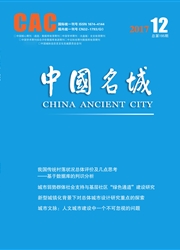

 中文摘要:
中文摘要:
以皖江城市带为例,通过熵值法测度1997-2012年县域城镇化水平;基于 GIS 分析平台,运用重心模型及协调度模型等对县域城镇化格局时空演变进行了探讨.结果表明:1997-2012年皖江城市带县域城镇化呈不断提升的态势,但县域城镇化差异日益显著;县域城镇化总体上呈现“合肥-芜湖”双核心的圈层演化结构;县域城镇化的重心在117°.28′-118°.37′E ,31°.85′-31°.34′N 波动,且重心主要向东南方向移动;县域城镇化系统内部整体协调度不强,仅部分县域城镇化水平协调耦合度较高.
 英文摘要:
英文摘要:
The paper took Wanjiang city belt as the research object , using entropy method to measure urbanization of the county ,based on GIS analysis platform ,using the gravity model and coordination degree model to discuss the county space-time evolution of urbanization pattern from 1997 to 2012 in Wanjiang city belt . The results showed that : since 1997 ,county urbanization was a tendency of rising , but increasingly significant difference of county urbanization ,county urbanization on the whole presented “Hefei-Wuhu” the dual core evolution structure ,the center gravity of county urbanization was in 117° .28′ - 118° .37′E ,31° .85′ - 31° . 34′N ,mainly moved to southeast direction ;county urbanization system within the overall coordination degree was not strong ,the only part of the county urbanization level coordination degree was higher .
 同期刊论文项目
同期刊论文项目
 同项目期刊论文
同项目期刊论文
 期刊信息
期刊信息
